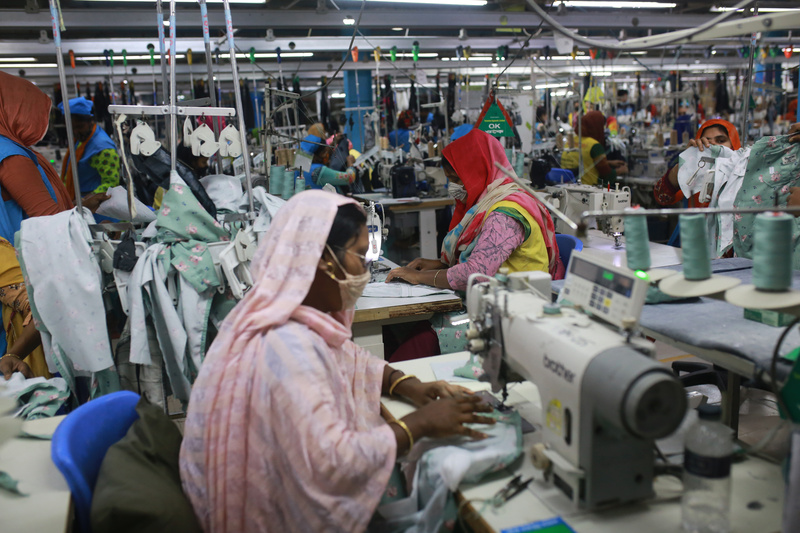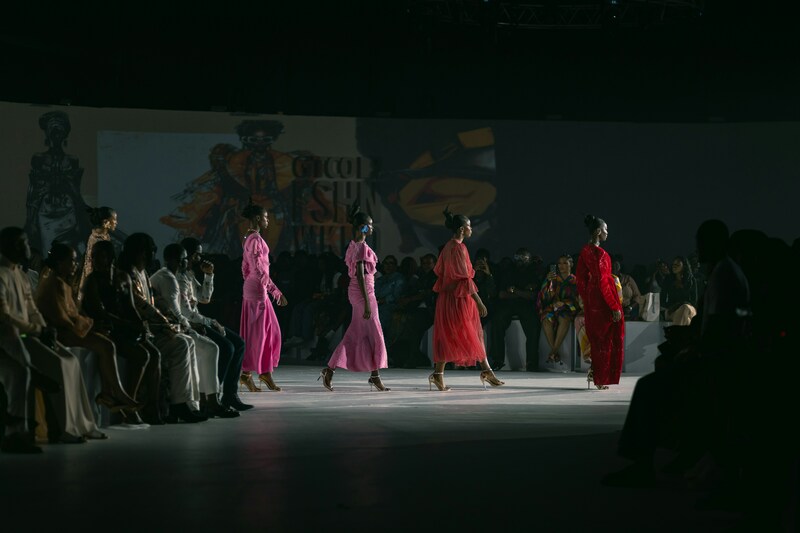Regenerative agriculture is gaining recognition in the apparel industry as a critical component of any brand’s sustainability journey. To reach net-zero targets, ensure materials are responsibly sourced, advance biodiversity commitments, and achieve a plethora of other corporate goals, regenerative agriculture seems to offer an opportunity for brands to shift their business models in a way that will deliver real impact. But what does that actually mean in practice?
When we talk about investing in regenerative agriculture, do we know what that transition would require from brands, consumers, or, most critically, farmers? Regenerative agriculture is a method that fundamentally requires more time, space, and resources; will it remain a buzzword in the boardrooms of an industry wrought by demands for faster, cheaper and newer?
I spoke with
Megan Meiklejohn, senior vice president of supply chain innovation at
Land to Market, to learn a bit more about the intersection of regenerative agriculture and the fashion industry, and the role it plays in the changing ecosystem.
*****
CB: "Regenerative" seems to be a buzz word in the sustainability world, but some studies suggest only 1.5% of farmland in the US follow regenerative practices. What are the barriers to regenerative practices at scale?
MM: Asking individuals to change the way they manage their land and business is a huge request, especially if their farm is running smoothly and is profitable. The barriers to adoption, or more specifically, the room to experiment with various practices to understand what works best for each individual’s context, vary and are multi-faceted as are the benefits. Barriers may include upfront investment, cultural challenges, the risk of lower production, or the loss of economic incentives such as subsidies and insurance.
The potential benefits are increases in productivity, resilience to floods and droughts, less reliance on subsidies, and access to additional markets where regeneratively grown products are in demand. The food and fashion industries can help to lower the risks for farmers by sourcing regeneratively grown products, paying a premium at least in the short term as farmers transition, and creating contracts with farm groups.
Brands have many initiatives around sustainable sourcing, regenerative agriculture, and supply chain traceability. The best way to succeed in meeting all these initiatives is to reduce the volatility for farmers by sourcing their products consistently and with long-term commitments.
CB: What are the requirements to be truly regenerative? What are the ideal outputs of regenerative farming?
MM: It’s best to be specific when using the term regenerative because inevitably the word will be understood as something different from one individual or organisation to the next. At Land to Market, when we say that land is regenerative, we mean that measurable outcomes of ecosystem health are trending in a positive direction. Each farm we work with is evaluated annually for soil health, biodiversity, and water and mineral cycling indicators. The ideal output is an increase in those evaluated indicators, signalling that the farmland is becoming healthier, erosion is minimized, water infiltrates quickly into the ground, and the ecosystem can support diverse plant and animal species.
We believe that animals play an outsized role in the process of regeneration, especially when they are managed properly, and that their potential for creating a positive impact should not be understated or ignored, which is why we focus on verifying livestock products, primarily meat, wool, and leather.
CB: It's no secret that we have a major overconsumption problem in the US. Can regenerative agriculture realistically keep up with the vast number of garments sold each year?
MM: Absolutely not. Natural fibres alone – conventional, organic, regenerative or otherwise – cannot keep up with the rate of garment production. More than 70% of fibres produced annually for textiles are synthetic. This cheap resource, manufactured at economies of scale, has allowed the garment industry to overproduce massive amounts of goods with lots of waste created in the process. This makes it a tough industry for natural fibres to compete in.
Most natural fibres are already traded at thin margins making the price pressures that come with competing against polyester and other plastic materials even more challenging. Some wool farmers have even changed their flock over to hair sheep (a type of sheep that sheds naturally and doesn't need to be shorn) because the cost of shearing is too high to make wool profitable for their business.
It is a shame because, while plastic has its place and has led to incredible material innovations, it’s also replaced natural fibres that many people cherish such as silk, wool and mohair, and has driven down the value of clothing. It’s great that awareness of regenerative agriculture is gaining and that brands are starting to source fibre and leather from regenerative farmers, and they should keep up those efforts. But we need to remember that simply using natural fibres is also important for the quality and integrity of the clothes we wear and because we need to maintain the value of these materials if we want to use them long into the future and have the opportunity to transition to regenerative agriculture.
CB: Cotton, wool and leather make up a large proportion of the most-used materials in the apparel and textiles industry. What sort of climate impact would we see with a mass transition to regenerative practices across these materials?
MM: I think we need to be careful about using the topic of climate to justify the transition to regenerative agriculture. There are many obvious and observable outcomes of a regenerative farm that benefit nature and people, regardless of whether carbon dioxide and other greenhouse gasses are emitted or sequestered. This way of farming is good for the health, beauty, and productivity of our world. When land is getting healthier rather than turning into a desert, for example, that’s clearly a good thing and I don’t think we need expensive carbon soil testing to tell us otherwise.
The fashion industry’s obsession with placing a carbon emissions factor on every material that is used has and continues to lead to poor and even harmful decisions such as prioritising the so-called low-impact materials that tend to be synthetics. We strip away the nuance and context that come with using natural fibres when the focus shifts to climate and carbon impacts. We’ve seen this scenario already play out in the ranking of fibre and materials based on poor and unrepresentative datasets and it continues to hurt the natural fibre sectors.
CB: What is the pathway to a future where brands deem regenerative agriculture as a "must have" in their sustainability roadmap, rather than a "nice to have"?
MM: I’d like to see brands take a thoughtful approach to regenerative agriculture by working collaboratively across the supply chain to support specific groups of farmers. I’ve been heartened to see a handful of brands invest in the growth of supply by supporting farmers in their transition to regenerative. Equally important, though, is to purchase what is currently available and to pay a premium, at least in the short term, as supply is limited, and demand is high.
But what I caution brands against is making goals baked in perfection - such as 100% regenerative materials in five years - without playing a more supportive role through investment or a commitment to uptake. Better yet, if brands placed a higher value on all natural fibres and prioritised their use, we would create an industry that begins to place quality over quantity. Use wool not acrylic for sweaters, silk and cotton not polyester for cocktail dresses, and real leather instead of faux. I’d like to see brands take a strategic stance on environmentalism by supporting farmers and nature rather than following the same sustainability playbook as everyone else.
I’ve been working on sustainability within the fashion industry for a decade now. I’ve seen countless commitments, unenforceable policies, carbon calculations and frameworks, and yet we use more plastic than ever, generate mountains of waste, some farmers are finding it unprofitable to shear wool, and I can’t help but feel that the industry has lost so much beauty and enjoyment as material quality continues to degrade.
So yes, for fashion at least, regenerative is a “nice-to-have” for now, but what’s crucial in the pathway to “must-have” is raising the importance of natural fibres and materials, paying farmers fairly for growing them, and what better way to do this than to support regenerative farmers now to show customers the amazing benefits and potential that is right in front of us to create a more beautiful and abundant world through fashion.
****
In conclusion, rather than using regenerative practices as a means to check a corporate box, they should be wielded as tools within a greater ecosystem built around nature-positive production. When implemented thoughtfully, a regenerative transition can be used as a pathway to restructure the ethos of a brand - one that invests not only in responsible sourcing, but in a just transition for suppliers; in circular, durable, and timeless materials; in a departure from wasteful overproduction, and in a brand-lead fight against overconsumption.
Let’s hope in 2024 we will see less of a quest for perfect solutions that prop up long-term targets, and more cross value chain partnerships between farmers, brands, and other stakeholders. Short-term steps need to be taken towards much more comprehensive and important goals, such as business model adaptations, climate justice, and resource stewardship - goals that reshape our priorities and how we view, sell, and use fashion.
We will be continuing this conversation with Megan Meiklejohn and other industry leaders at the Sustainable Apparel and Textiles Conference USA on 25th and 26th June in New York City. You can register for the New York event, or the sister event being held in Amsterdam, 23rd to 24th April on our registration pages. Amsterdam, 23rd-24th April 2024 New York, 25th-26th June 2024



